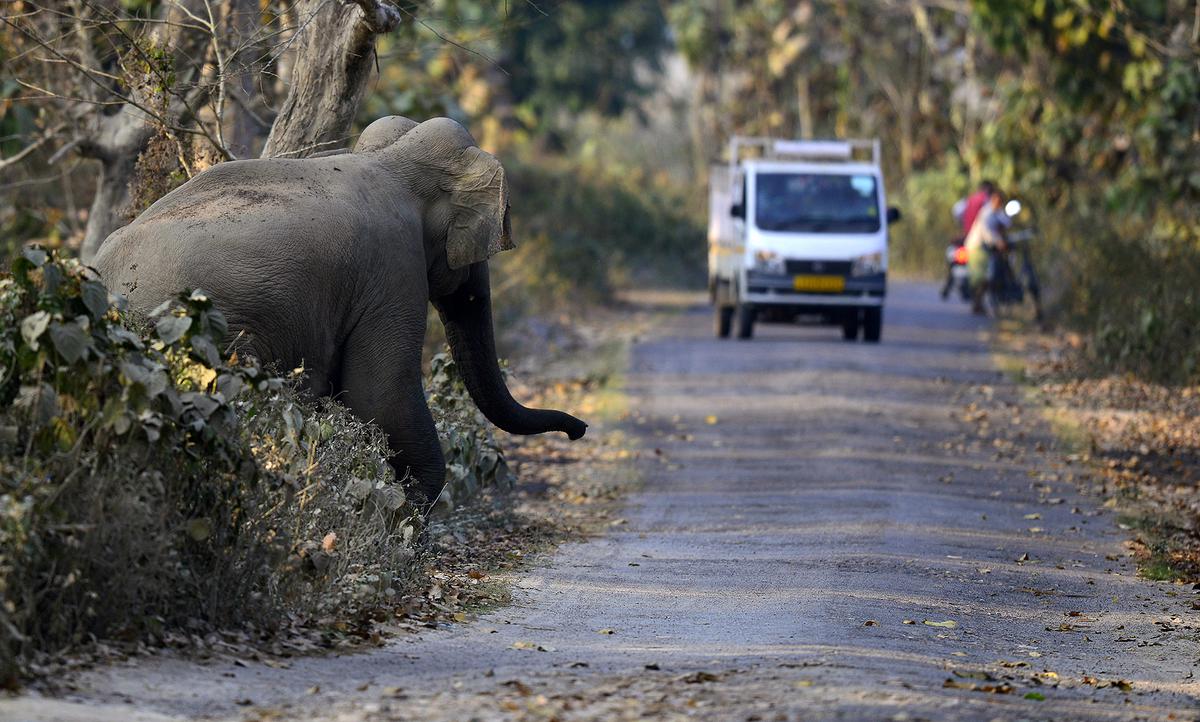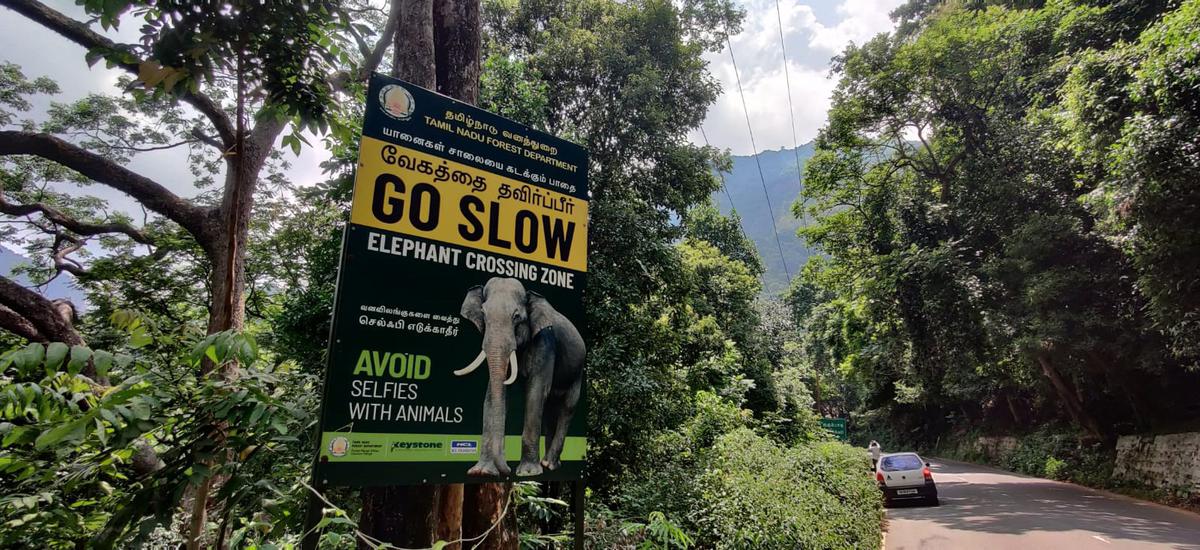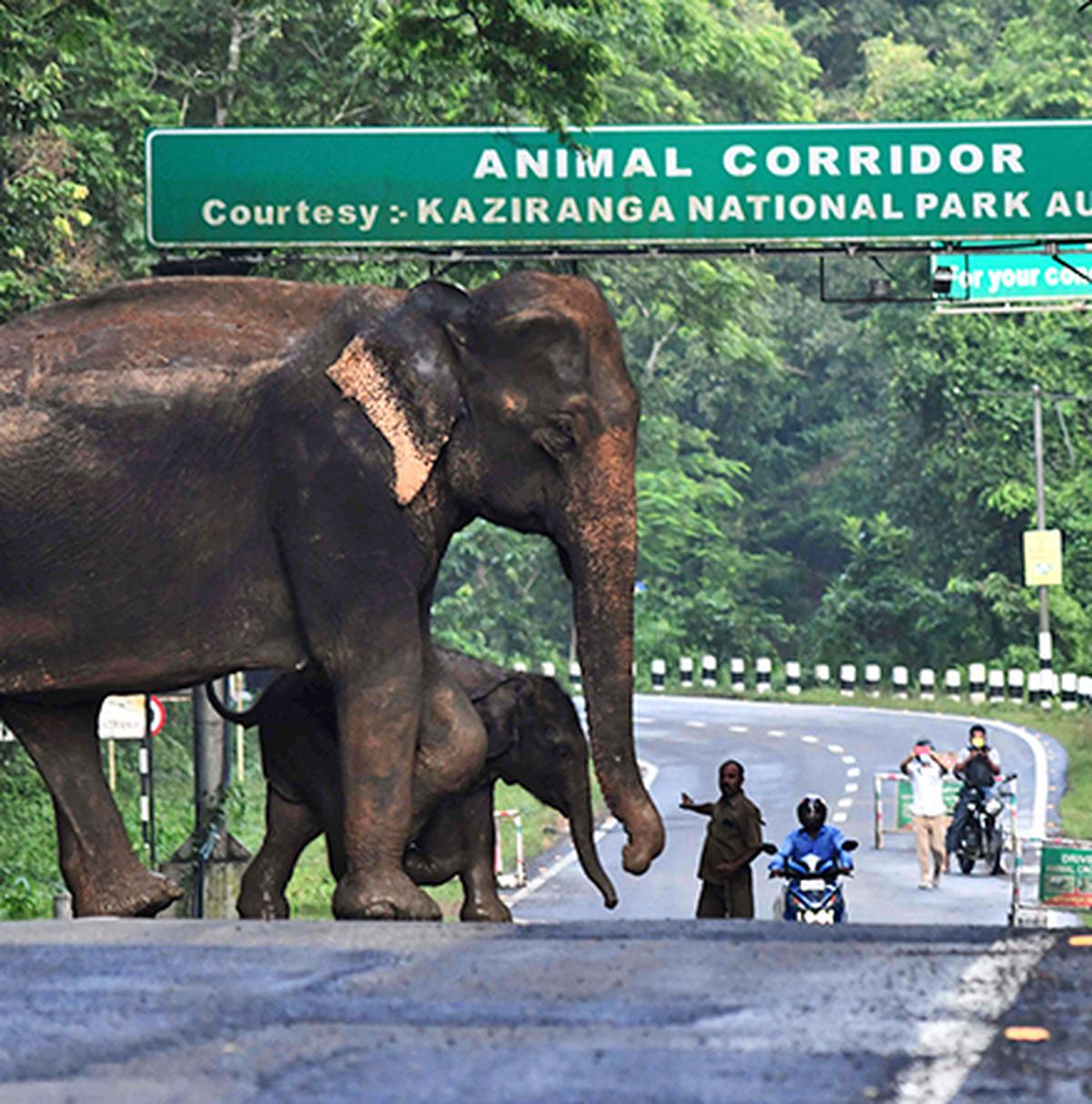An elephant charges at a local in Thadagam, Coimbatore
| Photo Credit: M Abraham Antony Raj
It all happens in a matter of seconds: an elephant swiftly crosses the road, and charges at a tourist; he is under its feet for a heart-stopping moment. But he scrambles to safety, and luckily for him, the matriarch lets him go. The viral video clip, shot recently at Muthanga in Kerala, has kick-started a conversation on the behaviour of tourists travelling on forest roads. Every day, drama unfolds along the routes running through forest areas in India: while some people prefer to look at wildlife they encounter from a respectful distance, others like to get close to the animal, unaware of the dangers involved or out of sheer audacity, to disastrous consequences.

An elephant comes out from the jungle and tries to cross a road to feed in agricultural fields in Amsoi reserve forest in Nagaon district of Assam.
| Photo Credit:
RITU RAJ KONWAR
“People have no business getting off their vehicle on forest roads,” says M Ananda Kumar, a scientist with Nature Conservation Foundation, who has been working on mitigating man-elephant conflict in places such as Valparai in Tamil Nadu and Hassan in Karnataka for over a decade. “No elephant wants to want kill people. It only does a mock charge when they get too close to it,” he says. He adds that tourists tend to click photos of the animals they encounter. “But elephants do not like cameras. The sounds from them can irritate the animals.”
Ananda Kumar says that people who enter forest areas in their vehicles should do so with a certain preparedness. “They must keep in mind that there is always a lurking danger.”
Coimbatore-based wildlife enthusiast and self-taught elephant tracker M Abraham Antony Raj, has been documenting elephants in the forests of Anaikatti, Sathyamangalam, and Kotagiri for 18 years now. “Such unruly behaviour began with the advent of mobile phones and selfies,” he says, adding that this is particularly rampant in the forest areas around Sathyamangalam. “So many tourists try to shoot [Instagram] reels with elephants in them,” he rues.

A signboard warning of elephant movement on the Mettupalayam – Udhagamandalam Road near Kallar in Coimbatore district.
| Photo Credit:
SPECIAL ARRANGEMENT
Abraham has noticed that the behaviour of elephants tends to change due to such encounters. He particularly remembers a herd of four at Kotagiri. “There is a tusker among them, who until three years ago, was quite gentle. Once, a bus driver drove up very close behind him, applying the brakes inches from him. The elephant, left without a choice, turned back to break the windshield. The driver then reversed the bus.” This action and reaction got stuck with the elephant, and now, Abraham says that the tusker has routinely started attacking vehicles that come too close.
“Several places, such as the road from Valparai to Athirappilly repeatedly see tourists disturbing elephants.” What can be done to mitigate this problem? “Awareness among tourists is the key,” says Abraham, who volunteers in forest areas to speak with visitors on what to do and what not to do when inside. “I’ve also created a WhatsApp group to send out informative videos on the issue,” he adds.

A wild elephant and a calf cross a National Highway at the Kaziranga National Park in India’s northeast state of Assam
| Photo Credit:
AFP
The Tamil Nadu Forest Department is doing its bit by deploying patrol teams at regular intervals. Says S Ramasubramanian, Field Director of the Anamalai Tiger Reserve: “We have teams that keep a regular watch on the road leading to Valparai since there are Nilgiri tahr in the region. There are also teams at elephant crossing zones on the road leading to Munnar, as well as the road leading to Ooty, that elephants sometimes tend to take.” He adds that the Department also has a camera surveillance system in place.
According to Raman Sukumar, an authority on Asian elephants, with four decades of experience studying the animals, people entering forests should be warned against getting off their vehicles right at the entry points. He says, “NGOs can be roped in for this exercise. There should be regular patrolling by the Forest Department so that when people indulge in such behaviour, they are booked.”
Raman has travelled to sanctuaries around the world and says that tourists are more disciplined elsewhere, especially in places such as South Africa. “Elephant behaviour is largely shaped by the history of its interaction with its environment,” he says. “These are behaviours that are transmitted culturally within families. If a mother exhibits certain behaviour, her children are more likely to acquire the same.”
It all boils down to doing what is best for the animal when we are in their territory. “The most important thing is to respect the animal. They are not objects,” says Ananda. “We talk about our privacy being invaded when someone tries to take our picture, it is the same for an animal.”
When in a forest…
Stay inside your vehicle
Speak softly, do not holler from one vehicle to another
Use cameras taking into consideration the comfort of the subject; refrain from using flash
If you encounter a wild animal, do not honk or flash headlights on it
Use forest roads only as per the timings issued by the Forest Department